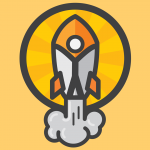3 Ways to Make a Decisive Decision
1. Fast Forwarding
The first approach is Fast-Forwarding. Every video player has a fast-forward button that allows you to jump to a later segment of the video. Similarly, Fast-Forwarding through life entails picturing yourself in a future situation with a specific choice and asking yourself if that's what you want.
How Does This Help?
Firstly, our minds often get clouded when facing a particular situation. Fears consume us, even though they might not be important in the long run. Fast-forwarding helps us better understand what matters and what doesn't. In the long run, things that seem unimportant to us now might prove to be vital, and vice versa. Things that seem important to us now might not be in the long run.
Secondly, when you envision yourself in the future, you can consider all options' pros and cons. You'll see the consequences of each option, helping you evaluate whether a specific choice will lead you to where you want to be. This approach allows you to make informed decisions rather than wasting years trying to find out.
How to Use This Approach?
- Choose the problem you're currently facing. It could be related to your relationship, marriage, work, friendship, health, or other aspects of life.
- Define your options.
- Apply the fast-forward technique to each option.
- Imagine taking Option A. How would your life be after a year? Or three years? Or five years? Or ten years? Observe the passing years as you go on this path. What would you do? How would you feel?
- Repeat the process with Option B, then Option C, and so on.
- Which situation would you prefer to be in? That's the best decision you can make.

2. The Ideal Vision
"No problem can be solved from the same level of consciousness that created it." - Scientist Albert Einstein.
If you want to solve your current problem, you need to adopt a different mindset—essentially the mindset of someone who has accomplished the goal you aspire to. This leads us to the “Ideal Vision” concept.
How to Use This Approach?
For your problem:
- What’s your Ideal Vision for this aspect of your life? For example, What would be your ideal career if you had to choose between two jobs? What’s your Ideal Vision of love if you’re thinking about getting married?
- Which option will get you closer to your Ideal Vision?
Example: Staying Married Vs. Getting a Divorce
Let's say you’ve been married for 25 years but no longer want to be with your spouse. You fear asking for a divorce because of loneliness, social stigma, uncertainty, legal fees, divorce proceedings, or post-divorce life.
Ask Yourself:
- What’s your love's Ideal Vision?
- Which option gets you closer to that Vision?
Your Ideal Vision may involve being with someone who truly understands and loves you, someone you want to spend the rest of your life with. What option will achieve this for you?
- Option A: Staying with your life partner, but everything remains unchanged. This won’t lead you to your Ideal Vision because you’ve lost all desire to be with them.
- Option B: Seeking a divorce. It may or may not align with your Ideal Vision. You might stay single after a divorce and meet no one suitable. Conversely, you might eventually find a life mate with whom you click and get married.
- Option C: Trying one last time to sort things out. Speak with your life partner, express your thoughts honestly, issue a warning, and seek advice from a marriage counselor.
There isn't a conclusive answer. Marriage involves another party, and we can’t predict or control their behavior. However, you can move closer to the ideal scenario once you know your Vision. Communicate your vision to your partner and try to convince them.
Option B seems like the solution if your partner doesn’t make an effort or remains unresponsive even after three or six months of trying. Even if you don’t know what the future holds, you'll have the opportunity to meet someone more suitable. However, you’ll never reach your Ideal Vision if you stick with Options A or C.
The Ideal Vision approach is helpful because it frees you from the present deadlock and allows you to concentrate on what you really want. You consider what you really want and figure out how to get it rather than dwelling on current limitations (which only worsen the situation). Moving toward your Ideal Vision sometimes requires painful conversations and feelings, but that may be the only option.
3. Pros and Cons Analysis
The last method is analyzing the pros and cons. This approach is useful when you need to select just one option out of several similar or entirely different ones. Here, you evaluate each option and decide which best meets your criteria.
How to Use This Approach?
- Identify the best available options for your problem.
- Conduct a detailed Pros And Cons Analysis for each option.
- Define your top 2-3 criteria.
- Choose the option that most aligns with these criteria.

Example: Immigration
Let’s assume you’re considering immigration or obtaining permanent residency in another country. You’re tired of living in your home country and want to move elsewhere. Your profession is in high demand, so you have options worldwide. However, this decision is also perplexing because you’re unsure of the best place to relocate.
Using This Method, Ask Yourself:
- Which few places do I desire to move to, providing a promising professional future?
- What are the Pros And Cons of each place?
- What are my top 2-3 goals in the new country?
- Which option aligns best with these goals?
By doing this, you can limit your options to a select few places, such as the US, UK, Australia, or New Zealand. Based on your preferred criteria, consider the pros and cons of each country. Factors may include cost of living, lifestyle, healthcare quality, education (if you have children), culture, and climate.
During this analysis, you’ll learn more about the criteria that matter to you. Decide that factors like healthcare quality (Option A), lifestyle (Option B), and culture (Option C) are most important. Next, select the option that best fits these criteria.
Defining your top 2-3 criteria is essential because most life choices are never perfect. You might never decide if you seek perfection. Clarify your priorities, select the best option, and maximize its benefits.
The Pros and Cons Analysis applies to evaluating job options as well. Start anew and explore other options if none of your choices fit your criteria. Repeat until you find an option that matches your top 2-3 criteria.
Reviewing Your Decision
Combining these approaches will solve your problem. Occasionally, one of the methods may offer a mysterious solution. If so, try the other two; the answer should reveal itself. If all three methods lead to the same solution, it’s a clear sign that this is the path you should follow.
These methods are designed to help you lead your ideal life, so it's unlikely that you'll receive very contradictory answers. Ultimately, your decision must meet these criteria. Consider this:
- Will this choice bring me closer to my ideal life? It should; otherwise, why consider it?
- Will it make me happy? Your choice should bring happiness. If not, there might be an issue. Reevaluate more options.
- Will I look back and regret not doing this? A wise decision shouldn't cause regret. It’s better to take action and see how it unfolds rather than avoiding it and wondering what could have happened. At least you’ll know you gave it your best effort and won’t feel regret.
In Conclusion
Faulty thinking leads to incorrect solutions. So, approach problems from different angles with greater awareness when solving them. Fast-forwarding helps you envision the future and see any decision's long-term consequences. Also, focusing on your Ideal Vision allows you to concentrate on the perfect scenario you desire. Then, discover the best option to achieve it.
Finally, Pros and Cons Analysis helps break down each option to its essential core, enabling you to select the best choice based on your priorities.
Use these three methods to clarify the ideal outcome and path. However, remember to define the goal before considering the how: What’s your ideal purpose? Then, figure out how to achieve it.






Add comment